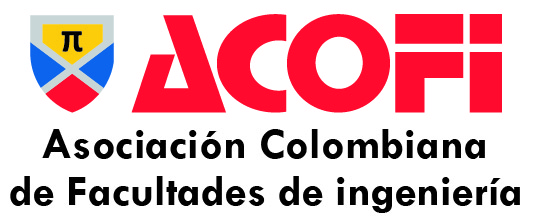Algoritmo genético basado en coeficiente de agrupamiento para la detección de comunidades en red de docentes de la Universidad Industrial de Santander
DOI:
https://doi.org/10.26507/rei.v17n33.1187Keywords:
Algoritmo genético, detección de comunidades, coeficiente de clustering.Abstract
Around the world, the academies are the most important concentration and diffusion center of knowledge for society. Through their professional training programs, they constantly provide to the society high quality knowledge engines, which through well-established alliances through scientific popularization, are able to provide solutions in different forms to the diverse needs and concerns that overwhelm in everyday life. In this research work, it seeks to solve the community detection problem (CD) through a clustering coefficient based genetic algorithm (CC-GA) to a collaborative network of the Universidad Industrial de Santander formed by teachers who have directed and co-directed work on campus in different programs to which they are originally linked. this will establish the condition of interdisciplinary collaboration of the network, as well as identify the most participatory teachers in these modalities, among other representative characteristics of the network
Downloads
References
[2] Q. Wang, W. Li, X. Zhang, and S. Lu, “Academic Paper Recommendation Based on Community Detection in Citation-Collaboration Networks,” APWeb, vol. 2, pp. 56–67, 2016.
[3] Y. Yang, P. G. Sun, X. Hu, and Z. J. Li, “Closed walks for community detection,” Phys. A Stat. Mech. its Appl., vol. 397, no. 37, pp. 129–143, 2014.
[4] P. Bedi and C. Sharma, “Community detection in social networks,” Wiley Interdiscip. Rev. Data Min. Knowl. Discov., vol. 6, no. 3, pp. 115–135, 2016.
[5] S. Kaur, S. Singh, S. Kaushal, and A. K. Sangaiah, “Comparative analysis of quality metrics for community detection in social networks using genetic algorithm,” Neural Netw. World, vol. 26, no. 6, pp. 625–641, 2016.
[6] N. Girdhar and K. K. Bharadwaj, “Community Detection in Signed Social Networks Using Multiobjective Genetic Algorithm,” J. Assoc. Inf. Sci. Technol., vol. 70, no. 8, pp. 788–804, 2019.
[7] M. Girvan and M. E. J. Newman, “Community structure in social and biological networks,” Proc. Natl. Acad. Sci. U. S. A., vol. 99, no. 12, pp. 7821–7826, 2002.
[8] Z. Jiang, J. Liu, and S. Wang, “Traveling salesman problems with PageRank Distance on complex networks reveal community structure,” Phys. A Stat. Mech. its Appl., vol. 463, pp. 293–302, 2016.
[9] M. Arasteh and S. Alizadeh, “A fast divisive community detection algorithm based on edge degree betweenness centrality,” Appl. Intell., vol. 49, no. 2, pp. 689–702, 2019.
[10] M. A. Javed, M. S. Younis, S. Latif, J. Qadir, and A. Baig, “Community detection in networks: A multidisciplinary review,” J. Netw. Comput. Appl., vol. 108, no. September 2017, pp. 87–111, 2018.
[11] B. A. Attea, W. A. Hariz, and M. F. Abdulhalim, “Improving the performance of evolutionary multi-objective co-clustering models for community detection in complex social networks,” Swarm Evol. Comput., vol. 26, pp. 137–156, 2016.
[12] F. Folino and C. Pizzuti, “An evolutionary multiobjective approach for community discovery in dynamic networks,” IEEE Trans. Knowl. Data Eng., vol. 26, no. 8, pp. 1838–1852, 2014.
[13] K. R. Žalik and B. Žalik, “Multi-objective evolutionary algorithm using problem-specific genetic operators for community detection in networks,” Neural Comput. Appl., vol. 30, no. 9, pp. 2907–2920, 2018.
[14] S. Mishra, C. Hota, L. Kumar, and A. Nayak, “An Evolutionary GA-Based Approach for Community Detection in IoT,” IEEE Access, vol. 7, pp. 100512–100534, 2019.
[15] M. E. J. Newman, “The structure of scientific collaboration networks,” Struct. Dyn. Networks, vol. 9781400841, pp. 221–226, 2001.
[16] M. C. V. Nascimento, “Community detection in networks via a spectral heuristic based on the clustering coefficient,” Discret. Appl. Math., vol. 176, pp. 89–99, 2014.
[17] X. Deng, J. Zhai, T. Lv, and L. Yin, “Efficient Vector Influence Clustering Coefficient Based Directed Community Detection Method,” vol. 5, 2017.
[18] J. Kim, J. G. Lee, and S. Lim, “Differential flattening: A novel framework for community detection in multi-layer graphs,” ACM Trans. Intell. Syst. Technol., vol. 8, no. 2, 2016.
[19] X. M. Li, G. Xu, and M. Tang, “Community detection for multi-layer social network based on local random walk,” J. Vis. Commun. Image Represent., vol. 57, pp. 91–98, 2018.
[20] A. Said, R. A. Abbasi, O. Maqbool, A. Daud, and N. R. Aljohani, “CC-GA: A clustering coefficient based genetic algorithm for detecting communities in social networks,” Appl. Soft Comput. J., vol. 63, pp. 59–70, 2018.
[21] M. E. J. Newman, “Modularity and community structure in networks,” vol. 103, no. 23, pp. 8577–8582, 2006.
Downloads
Published
How to Cite
Issue
Section
License
Total or partial reproduction of the documents published in the journal is authorized only when the source and author are cited.
| Article metrics | |
|---|---|
| Abstract views | |
| Galley vies | |
| PDF Views | |
| HTML views | |
| Other views | |









